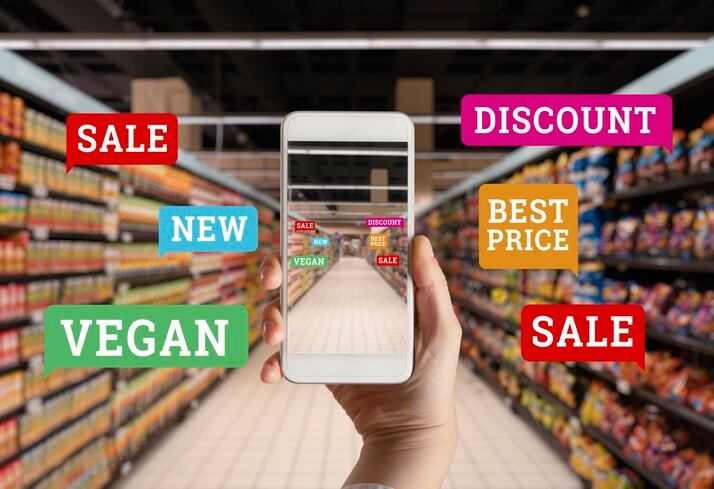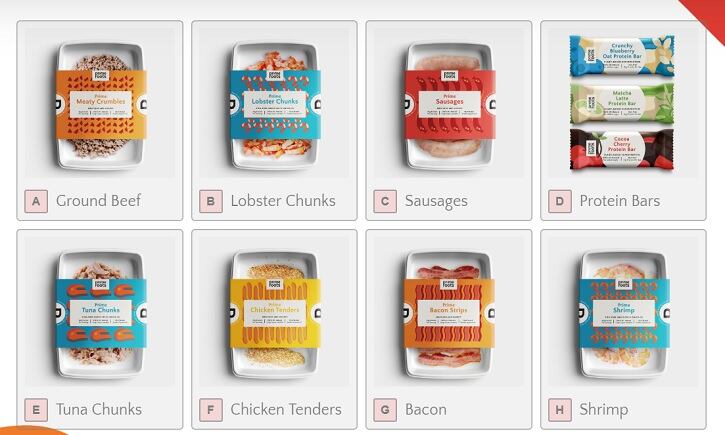“There are so many advantages for a small company starting out online and selling direct-to-consumers” versus in brick-and-mortar, Madeline Haydon, the founder and CEO of the plant-based creamer nutpods, told attendees last month at the Digital Food & Beverage conference in Austin, Texas.
For example, she said, selling online gives companies direct access to information that you cannot get from IRI, SPINS or Nielsen, such as the gender breakdown of a brand’s consumers, how often they buy a product, whether they are they loyal to one flavor or switch around, where they are located geographically and much more.
“It gives you this depth of information that you not only want but need to make more intelligent decisions when you are dealing with constraints of capital or you just don’t have a lot of time. So, you can get the most bang for your buck,” she said.
It can also help entrepreneurs break into brick and mortar by arming them with much-needed data about where their products will sell best, who will buy it and estimated velocity.
But before brands can mine this data for insights, they need to gather it – which means connecting with consumers for the first time. Unfortunately, this can be more challenging for brands sold online than when a product is prominently displayed at eye-level on a retail store shelf for easy discovery.
Three strategies to grow DTC
One effective strategy for reaching consumers that Max Dresse, the director of retail at the ready-made meal company Freshly, said surprised him is direct mail.
“Direct mail is a super effective campaign. Sending postcards to people’s homes with a coupon converts better than many, many other marketing tactics,” he said at the conference.
Hema Reddy, the CEO of Crafty Counter, which makes frozen nuggets, agreed, noting that “people are so overloaded with online and Facebook that marketing there can be hit or miss. Same thing with Google.”
She explained that her company is currently in the middle of a marketing campaign and within the first week of sending out mail consumers were already ordering her products online.
Crafty Counter also used livestreaming and videos to generate initial interest in the brand – a strategy that allowed it to show the product, how to prepare it and draw attention to events and demos, Reddy said.
Another strategy is to work with influencers, affiliates and brand ambassadors to generate word of mouth marketing, which is how Haydon said nutpods built its following quickly.
“For our brand, we don’t see the consumer for us looking at ad billboards or beautiful magazine ads. But when they shop, they care about whether a product fits into their diet, like Whole30 or Keto, and for that they are more likely to talk to their friends or look at the reviews and stars on Amazon,” she said.
Tips for balancing online and offline business
Once a thriving online business is established and brands are ready to expand to brick-and-mortar they need to craft a marketing strategy that allows each channel to grow simultaneously and that protects against consumers simply shifting from one channel to another, all three entrepreneurs advised.
The best way to do this is to avoid creating an apples to apples comparison between the online and offline business, advised Dresse.
“We do not want to put the same meals online and in other channels” in part because the brand does not want to compete against itself online and offline, he said.
Haydon added that offering different products online and offline allows entrepreneurs to price online products at a higher point, which will help compensate for the expense of shipping. If, however, consumers see that a 12-pack online is more than a 12-pack in a store, they might skip straight to the retailer, she said.
For that reason, she said, nutpods offers exclusive products online that cannot be purchased in store, including a 4-pack and a variety pack.
While tailoring a marketing strategy to each channel is useful, Reddy adds that brands also need to create a cohesive identity across channels so that consumers understand the products and brand are the same online and offline.
One way she said she did this was by making sure all the coupons and marketing materials for each channel were the same, as well as the product descriptions and call-outs across channels.
Take your time
Crafting an effective marketing strategy online and offline requires some testing and recalibrating to find what works and what doesn’t, which is why the trio of entrepreneurs encouraged others to take their time when expanding their business across multiple channels.
They also advised other entrepreneurs not to take a hit on their margins in order to break into a new channel.
“You always need to start with sustainable margins,” Haydon advised, adding, “don’t take on channels if it is going to be unreasonable.”



